The foraging is not done for the season. In fact we forage year round. There was plenty to find in West Palm Beach this past weekend. We started, unusually, with mushrooms. I usually don’t discuss mushrooms because I am not qualified to talk about most of them. But these were Ringless Honey Mushrooms, considered by some among the easiest to identify in North America.
While Honeys can come up any time of year they favor late fall and early winter though their “flushing” can vary. Some years I see them as early as October or as late as January. This year they seemed to come up in mid-November then a month later. Opinions on their edibility range from “leave them alone” to “choice.” The literature has reports of some people getting ill after eating them, although I have never met anyone with that problem. They reportedly can cause digestive upset, short in duration for some, long in duration for others. This should not be surprising because the same thing happens with wild edible plants and cultivated ones. I know a lot of people who, for example, cannot eat mangos. There are also various ways to prepare Honeys. Some eat only the caps. Some parboil the caps first then cook them in other ways. Others insist they just need to be cooked longer than other mushrooms. As you can see there is a range, as there is with common food. Even if one doesn’t eat wild mushrooms (or wild plants!) it is still good to know what wild plans are. You can read about Ringless Honey Mushrooms here.
One of the reasons why I like to hold classes from North Carolina to South Florida is I get to see edibles ranging from a temperate forest to tropical. In West Palm Beach there is a good mix. We did see a Cashew tree — now out of fruiting season— as were the Mangos and the Jambuls. There were a few cashew shells around but you have to be careful as the shells are extremely caustic. Mahogany trees are interesting to look at but their “nut” is not edible. Tamarinds, however, do have edible pods. There are two at the class location, planted side by side. I’m not sure why. Pollination might be an issue, or they like company. They are wildly used as flavoring particularly in Asian sphere of influence. I didn’t notice them until one year I was there at the right time when they were fruiting. The tamarinds are also not far from what I call the Child-Proof tree, the Silk Floss. It is huge can very well armed with thorns and tiny edible parts one can never reach.
The Seagrape tree was out of season but a relative, the Pigeon Plum, aka Dove Plum, did have some fruit to try. It’s a very strange foragable. While the dark-purple ripe fruit can be eaten off the tree it is astringent. But if it is dried and then rehydrated the fruit becomes delicious. So I usually pick dry ones off the ground and also what dry ones I can find on the tree then soak them in a little water. They are well worth the effort becoming non-astringent and sweet. Another odd tree we sampled was the Mahoe, this time a variegated one. Flowers, young leaves, and inner bark are all edible. What is odd about the tree is that its blossom are yellow in the morning. If they are not pollinated by the afternoon they will turn red to attract a different insect to do the job. The texture of the blossom also changes through the day, the petals, delicate in the morning become tough and papery by late afternoon. You can read about it here.
One of my favorite south Florida trees is the Tropical Almond, also called the Sea Almond. It’s not related to the almond at all but the weathering fruit looks like a large unshelled almond hence the name. If you hit the fraying dry pod between two rocks — very hard to find in Florida — or on edge with a hammer you will hear a distinct sharp “crack.” You can then open the pod to find a cylindrical “nut” inside that is quite tasty. It’s not really a nut but it looks, breaks, chews, and tastes like one. You don’t have to roast them, raw is fine. However, I might collect some next time I am teaching there — mid-January I think — and I will try shelling and roasting some, just for the taste of it. You can read more about the Tropical Almond here.
Among the dozens of edible species we saw in West Palm Beach were Juniper, Yellow Pond Lillies, Purslane, Blue Porter Weed, Yaupon Holly, Poor Man’s Pepper Grass, Hairy Bittercress, Cocoplums, Simpson Stopper, two species of Amaranth, Pandanus Grass, Dollar Weed, Water Hyssop, Spanish Needles, Oxalis, Perennial Peanut, Cattails, Hairy Cowpea, Traveler Palms, medicinal Sida, Pellitory aka Cucumber Weed, Banyans and their relative Rubber Trees.
The Fifth Annual Urban Crawl was fun. We started at Panera’s in downtown Winter Park a little after 10 a.m., negotiated AMTRAK and then passing showers of the cold front. (One forages regardless of the weather because in real life if one is hungry one forages regardless of the weather.) The educational element of this particular Urban Crawl is the mixture of weeds, natives and edible ornamentals. Among the more odd things we saw was a limequat, which was a self-created hybrid and I think the only citrus with striped fruit. We did get to taste some out-of-season Podocarpus fruit, blue and sweet. At the east end of Morse Avenue there was a flowering Natal Plum. We managed to find one almost ripe fruit on it. And a short distance away an attractive specimen of a Weeping Holly loaded with caffeine and anti-oxidants. Our three-hour stroll took us along Lake Virginia near Rollins College where we found an abundance of Wild Cucumbers still setting. They are a nice, crunchy find. The cold weather will knock them out until April or so. There was also a lot of wild mint, water hyssop, and The annual crawl is free to anyone who shows up.
Upcoming Foraging Classes:
Sunday, Jan. 3rd,Bayshore Live Oak Park, 2200 East Lake Road, Port Charlotte, FL. 9 a.m.
Sunday, Jan. 10th, Spruce Creek Park, 6250 Ridgewood Ave. Port Orange, FL. 9 a.m.
Sunday, Jan. 17th, 2016, Sunday, Nov. 15, Mead Garden, 1500 S. Denning Dr., Winter Park, FL, 9 a.m.
Sunday, Jan. 24th, George LeStrange Preserve, 4911 Ralls Road, Fort Pierce, FL, 9 a.m.
Sunday, Jan. 31st, Jervey Gantt Recreation Complex, 2390 SE 36th Ave., Ocala, FL, 9 a.m.
Sunday, Feb. 7th, Red Bug Slough Preserve, 5200 Beneva Road, Sarasota, FL, 9 a.m.
Sunday, Feb. 14, Mead Garden,1500 S. Denning Dr., Winter Park, FL, 9 a.m.
Sunday, March 6th, Florida State College, south campus, 11901 Beach Blvd., Jacksonville, 9 a.m.
Sunday, March 13th, Mead Garden, 1500 S. Denning Dr., Winter Park, FL, 9 a.m.
Saturday, March 19, Colby-Alderman Park: 1099 Massachusetts Street, Cassadaga, 9 a.m.
Saturday, March 26th, Dreher Park, 1200 Southern Blvd., West Palm Beach, 9 a.m.
Sunday, April 3rd, John Chestnut County Park: 2200 East Lake Road, Palm Harbor, FL, 9 a.m.
Sunday, April 10th, Wekiva State Park, 1800 Wekiwa Circle, Apopka, Florida 32712. 9 a.m.
Sunday, April 17th, Bayshore Live Oak Park, 2200 East Lake Road, Port Charlotte, FL. 9 a.m.
Sunday, April 24th, Wickham Park: 2500 Parkway Drive, Melbourne, FL 9 a.m
To learn more about the classes go here.
All of Green Deane’s videos are available for free on You Tube. They do have ads on them so every time you watch a Green Deane video I get a quarter of one cent. Four views, one cent. Not exactly a large money-maker but it helps pays for the newsletter. If you want to see the videos without ads and some ins lightly better quality you can order the DVD set. It is nine DVDs with 15 videos on each. Many people want their own copy of the videos or they have a slow service and its easier to order then to watch them on-line. They make a good Christmas or birthday gift. Individual videos can also be ordered. You can order them by clicking on the button on the top right of this page or you can go here.
Want to identify a plant? Perhaps you’re looking for a foraging reference? You might have a UFO, an Unidentified Flowering Object, you want identified. On the Green Deane Forum we — including Green Deane and others from around the world — chat about foraging all year. And it’s not just about warm-weather plants or just North American flora. Many nations share common weeds so there’s a lot to talk about, such as the one to the left. There’s also more than weeds. The reference section has information for foraging around the world. There are also articles on food preservation, and forgotten skills from making bows to fermenting food. Recent topics include: Small Herb, Solanum americanum, Winter Fruits in Sanibel, Are These Plants Related to Canavalia maritima? Lawn Weed, Wild Cucumber, Melothria Pendula, Edibility of Flowers From Landscape Hibiscus, Primitive Survival Class, Which Agave? Gallium or Carpetweed? Dichotomous Key: This made me smile, Foraging “For Real,” Spiky Fruits, Pine Cough Drops and Needles, Skullcap, Malodorous Plant? Another NJ Tree, and Maypops. You can join the forum by clicking on the button on the upper right hand side of this page.
This is newsletter 188, and Merry Christmas!
To donate to the Green Deane Newsletter or website click here.


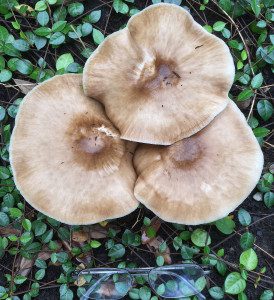
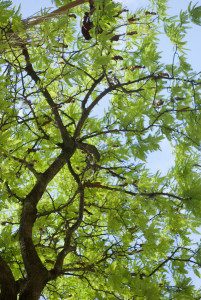
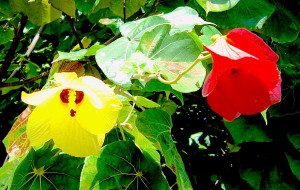
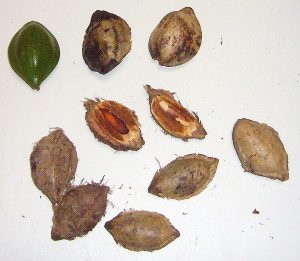
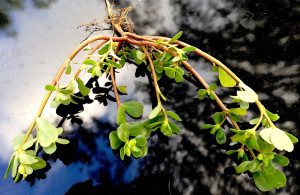
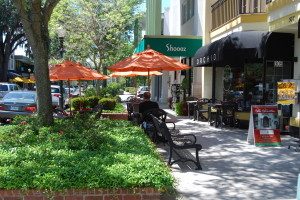
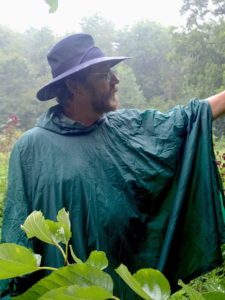
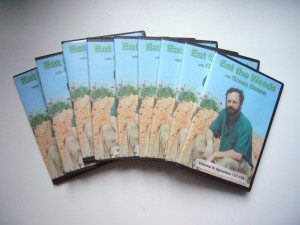
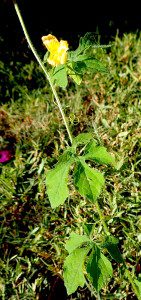

Tamarind fruits are loaded with naturally occurring fluoride. The fluoride put into our drinking water and commercial toothpastes is a toxic waste byproduct of the fertilizer industry, not something any of us should be putting into our bodies. To chelate the toxic tamarind, eat the natural stuff. It’s chemical structure is slightly different, and it binds to the toxic stuff and drags it out of our bodies via our urine. You may want to support your kidneys while you do this with burdock root tea.
Do you plan on making available a new DVD with youtube episodes which haven’t been put on DVD yet? I have the set and have enjoyed them quite a bit. The kids love to yell “EAT THE WEEDS” with you at the beginning of each video.
By the way….I may be really out of the loop, but despite trying to subscribe to the eat the weeds you tube, I never get anything. Do you just not like me ?
Actually yes… I think I need to do a couple of more videos so I can make it 150 videos total.
Merry Christmas and Happy New Year dear Green. As usual while enjoying reading “Eattheweeds” I feel I’m transformed to a state of meditation. In this issue I found myself focussing on the flower colour change of the Mahoes as being different at late afternoon from morning. I like the reasoning given and I’m attracted to indulge on pollination. This led me think of the phenomenon of pairing (implying coupling or marriage) male and female as applicable to all things created in our earth resulting in the fruit (child) . In case of the Mahoes their concern is pollination.
As I’ve known it has to do with genetics – like humans , the plant carries certain pigments in their genes that they decide before they are born what colour will be; e.g. the colours of flowers such as the red and yellow are found in pigments that are determined by the hereditary genome of the plant. Flower colours of red, pink, blue, and purple originate mainly from the pigments called anthocyanins belonging to the chemical class named flavonoids. As colour intensity, which is related to colour change during the day period, it is dependent mainly upon variation of temperature apart from the effect of pH of the medium and the amount of the pigments themselves. ”Glory be to Him who has created all the pairs of that which the earth produces as well as their own (human) kind (male and female) and that which they know not.” Holy verse.